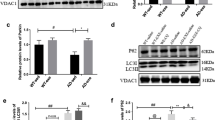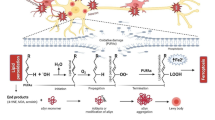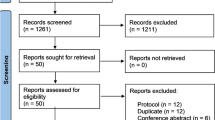Abstract
Amyotrophic lateral sclerosis (ALS) is a progressive neurodegenerative disease that primarily affects the nerve cells responsible for controlling voluntary muscle movement in the brain and spinal cord, causing loss of muscle control. Moreover, other researchers have reported that BV phospholipase A2 (bvPLA2) has neuroprotective effects in a mouse model of Alzheimer’s disease (AD). The aim of this study was to investigate whether bvPLA2 alleviates the pathological features of ALS by affecting Tregs in SOD1 mice. SOD1-G93A mice were used as the ALS model. The mice (75-days old) were administered phosphate buffered saline (PBS) or bvPLA2 (0.5 mg/kg) twice a week. The results demonstrated that the body and hindlimb weights of PBS-treated SOD1 mice were lower than those of wild-type mice, whereas that of bvPLA2-treated SOD1 mice increased compared to that of PBS-treated SOD1 mice. Motor function also decreased to a lesser extent in bvPLA2-treated SOD1 mice, whereas that of PBS-treated SOD1 mice was significantly impaired compared to wild-type mice. Moreover, bvPLA2-treated SOD1 mice had greater number of intact motor neurons in their lumbar spinal cord compared to PBS-treated SOD1 mice. The level of Tregs in the TA muscle was also higher in bvPLA2-treated SOD1 mice than in PBS-treated SOD1 mice. Lastly, bvPLA2-treated SOD1 mice showed less increase in levels of NOS2 and TNF-α and lower levels of IL-4 and IL-10 compared to PBS-treated SOD1 mice. Thus, our data suggest that bvPLA2 alleviates the progress of ALS by inducing a Treg-mediated anti-inflammatory response.





Similar content being viewed by others
References
Akimova T, Beier UH, Wang L, Levine MH and Hancock WW (2011) Helios expression is a marker of T cell activation and proliferation. PLoS One 6(8):e24226
Alves CJ, de Santana LP et al (2011) Early motor and electrophysiological changes in transgenic mouse model of amyotrophic lateral sclerosis and gender differences on clinical outcome. Brain Res 1394:90–104
Annacker O, Asseman C, Read S, Powrie F (2003) Interleukin-10 in the regulation of T cell-induced colitis. J Autoimmun 20(4):277–279
Baek H, Jang HI, Jeon HN, Bae H (2018) Comparison of administration routes on the protective effects of bee venom phospholipase A2 in a mouse model of Parkinson’s disease. Front Aging Neurosci 10:179
Bettelli E, Carrier Y et al (2006) Reciprocal developmental pathways for the generation of pathogenic effector TH17 and regulatory T cells. Nature 441(7090):235–238
Brown RH Jr, Al-Chalabi A (2017) Amyotrophic lateral sclerosis. N Engl J Med 377(16):1602
Burrell JR, Kiernan MC, Vucic S, Hodges JR (2011) Motor neuron dysfunction in frontotemporal dementia. Brain 134(Pt 9):2582–2594
Cereda C, Baiocchi C et al (2008) TNF and sTNFR1/2 plasma levels in ALS patients. J Neuroimmunol 194(1–2):123–131
Chung ES, Lee G et al (2015) Bee Venom phospholipase a2, a novel foxp3+ regulatory t cell inducer, protects dopaminergic neurons by modulating neuroinflammatory responses in a mouse model of Parkinson’s disease. J Immunol 195(10):4853–4860
Curiel TJ (2007) Tregs and rethinking cancer immunotherapy. J Clin Invest 117(5):1167–1174
Giovannelli I, Heath P, Shaw PJ, Kirby J (2020) The involvement of regulatory T cells in amyotrophic lateral sclerosis and their therapeutic potential. Amyotroph Lateral Scler Frontotemporal Degener 21(5–6):435–444
Gliwinski M, Iwaszkiewicz-Grzes D, Trzonkowski P (2017) Cell-based therapies with T regulatory cells. BioDrugs 31(4):335–347
Gomes MDM (2019) Franz Nissl (1860–1919), noted neuropsychiatrist and neuropathologist, staining the neuron, but not limiting it. Dement Neuropsychol 13(3):352–355
Hardiman O, Al-Chalabi A et al (2017) Amyotrophic lateral sclerosis. Nat Rev Dis Primers 3:17085
Hensley K, Fedynyshyn J et al (2003) Message and protein-level elevation of tumor necrosis factor alpha (TNF alpha) and TNF alpha-modulating cytokines in spinal cords of the G93A-SOD1 mouse model for amyotrophic lateral sclerosis. Neurobiol Dis 14(1):74–80
Hooten KG, Beers DR, Zhao W, Appel SH (2015) Protective and Toxic Neuroinflammation in Amyotrophic Lateral Sclerosis. Neurotherapeutics 12(2):364–375
Hori S, Nomura T, Sakaguchi S (2003) Control of regulatory T cell development by the transcription factor Foxp3. Science 299(5609):1057–1061
Jung KH, Baek H et al. (2016) Protective Effects of Intratracheally-Administered Bee Venom Phospholipase A2 on Ovalbumin-Induced Allergic Asthma in Mice. Toxins (Basel) 8(10):1
Kim H, Lee H et al (2015) Phospholipase A2 inhibits cisplatin-induced acute kidney injury by modulating regulatory T cells by the CD206 mannose receptor. Kidney Int 88(3):550–559
Kwon YB, Lee JD et al (2001) Bee venom injection into an acupuncture point reduces arthritis associated edema and nociceptive responses. Pain 90(3):271–280
Lasiene J and Yamanaka K (2011) Glial cells in amyotrophic lateral sclerosis. Neurol Res Int 2011:718987
Lee SM, Lim J, Lee JD, Choi DY, Lee S (2014) Bee venom treatment for refractory postherpetic neuralgia: a case report. J Altern Complement Med 20(3):212–214
Li D, Lee Y, Kim W, Lee K, Bae H, Kim SK (2015) Analgesic Effects of Bee Venom Derived Phospholipase A(2) in a Mouse Model of Oxaliplatin-Induced Neuropathic Pain. Toxins (basel) 7(7):2422–2434
Linderoth L, Peters GH, Jorgensen K, Madsen R, Andresen TL (2007) Synthesis of sn-1 functionalized phospholipids as substrates for secretory phospholipase A2. Chem Phys Lipids 146(1):54–66
Liu XD, Zhang JL, Zheng HG, Liu FY, Chen Y (2008) Clinical randomized study of bee-sting therapy for rheumatoid arthritis. Zhen Ci Yan Jiu 33(3):197–200
Mantovani S, Garbelli S et al (2009) Immune system alterations in sporadic amyotrophic lateral sclerosis patients suggest an ongoing neuroinflammatory process. J Neuroimmunol 210(1–2):73–79
Masrori P, Van Damme P (2020) Amyotrophic lateral sclerosis: a clinical review. Eur J Neurol 27(10):1918–1929
McCauley ME, Baloh RH (2019) Inflammation in ALS/FTD pathogenesis. Acta Neuropathol 137(5):715–730
McCombe PA, Henderson RD (2011) The Role of immune and inflammatory mechanisms in ALS. Curr Mol Med 11(3):246–254
McGoldrick P, Joyce PI, Fisher EM and Greensmith L (2013) Rodent models of amyotrophic lateral sclerosis. Biochim Biophys Acta 1832(9):1421-1436
Mousavi SM, Imani S, Haghighi S, Mousavi SE, Karimi A (2012) Effect of Iranian Honey bee (Apis mellifera) Venom on Blood Glucose and Insulin in Diabetic Rats. J Arthropod Borne Dis 6(2):136–143
Murdock BJ, Zhou T, Kashlan SR, Little RJ, Goutman SA, Feldman EL (2017) Correlation of Peripheral Immunity With Rapid Amyotrophic Lateral Sclerosis Progression. JAMA Neurol 74(12):1446–1454
Neary D, Snowden JS et al (1998) Frontotemporal lobar degeneration: a consensus on clinical diagnostic criteria. Neurology 51(6):1546–1554
Park S, Baek H et al (2015) Bee venom phospholipase A2 suppresses allergic airway inflammation in an ovalbumin-induced asthma model through the induction of regulatory T cells. Immun Inflamm Dis 3(4):386–397
Phukan J, Pender NP, Hardiman O (2007) Cognitive impairment in amyotrophic lateral sclerosis. Lancet Neurol 6(11):994–1003
Poloni M, Facchetti D et al (2000) Circulating levels of tumour necrosis factor-alpha and its soluble receptors are increased in the blood of patients with amyotrophic lateral sclerosis. Neurosci Lett 287(3):211–214
Read S, Malmstrom V, Powrie F (2000) Cytotoxic T lymphocyte-associated antigen 4 plays an essential role in the function of CD25(+)CD4(+) regulatory cells that control intestinal inflammation. J Exp Med 192(2):295–302
Rosen DR (1993) Mutations in Cu/Zn superoxide dismutase gene are associated with familial amyotrophic lateral sclerosis. Nature 364(6435):362
Senel E, Kuyucu M, Suslu I (2014) Honey and bee venom in dermatology: A novel possible alternative or complimentary therapy for psoriasis vulgaris. Anc Sci Life 33(3):192–193
Sheean RK, McKay FC et al (2018) Association of Regulatory T-Cell Expansion With Progression of Amyotrophic Lateral Sclerosis: A Study of Humans and a Transgenic Mouse Model. JAMA Neurol 75(6):681–689
van Es MA, Hardiman O et al (2017) Amyotrophic lateral sclerosis. Lancet 390(10107):2084–2098
Ye M, Chung HS et al (2016) Neuroprotective effects of bee venom phospholipase A2 in the 3xTg AD mouse model of Alzheimer’s disease. J Neuroinflammation 13:10
Zhao W, Beers DR, Liao B, Henkel JS, Appel SH (2012) Regulatory T lymphocytes from ALS mice suppress microglia and effector T lymphocytes through different cytokine-mediated mechanisms. Neurobiol Dis 48(3):418–428
Acknowledgements
We would like to thank Elsevier (https://.webshop.elsevier.com) for English language editing.
Funding
This study was supported by a National Research Foundation of Korea (NRF) grant funded by the Korean government (MSIT; NRF-2020R1A2B5B03002164).
Author information
Authors and Affiliations
Contributions
Conceptualization: H.B.; Methodology: M.H., M.K.S.P. and I.-H.H.; Formal analysis and investigation: M.H. and M.K. Writing – review and editing: I.-H.H.; Fungding acquisition: H.B.; Resources: H.B.; Supervision: H.B. Approval of the manuscript: All authors.
Corresponding authors
Ethics declarations
Ethical statement
All animal studies were approved by the University of Kyung Hee Institutional Animal Care and Use of Committee (KHUASP [SE]-20-529).
Conflict of interest
Minwoo Hong has no conflict of interest. Mi Jung Kang has no conflict of interest. Sehyun Pak has no conflict of interest. Ik‑Hwan Han has no conflict of interest. Hyunsu Bae has no conflict of interest.
Additional information
Publisher's Note
Springer Nature remains neutral with regard to jurisdictional claims in published maps and institutional affiliations.
Rights and permissions
About this article
Cite this article
Hong, M., Kang, M.J., Pak, S. et al. Bee venom phospholipase A2 ameliorates amyotrophic lateral sclerosis by increasing regulatory T cell population. ADV TRADIT MED (ADTM) 22, 599–606 (2022). https://doi.org/10.1007/s13596-022-00631-9
Received:
Accepted:
Published:
Issue Date:
DOI: https://doi.org/10.1007/s13596-022-00631-9




